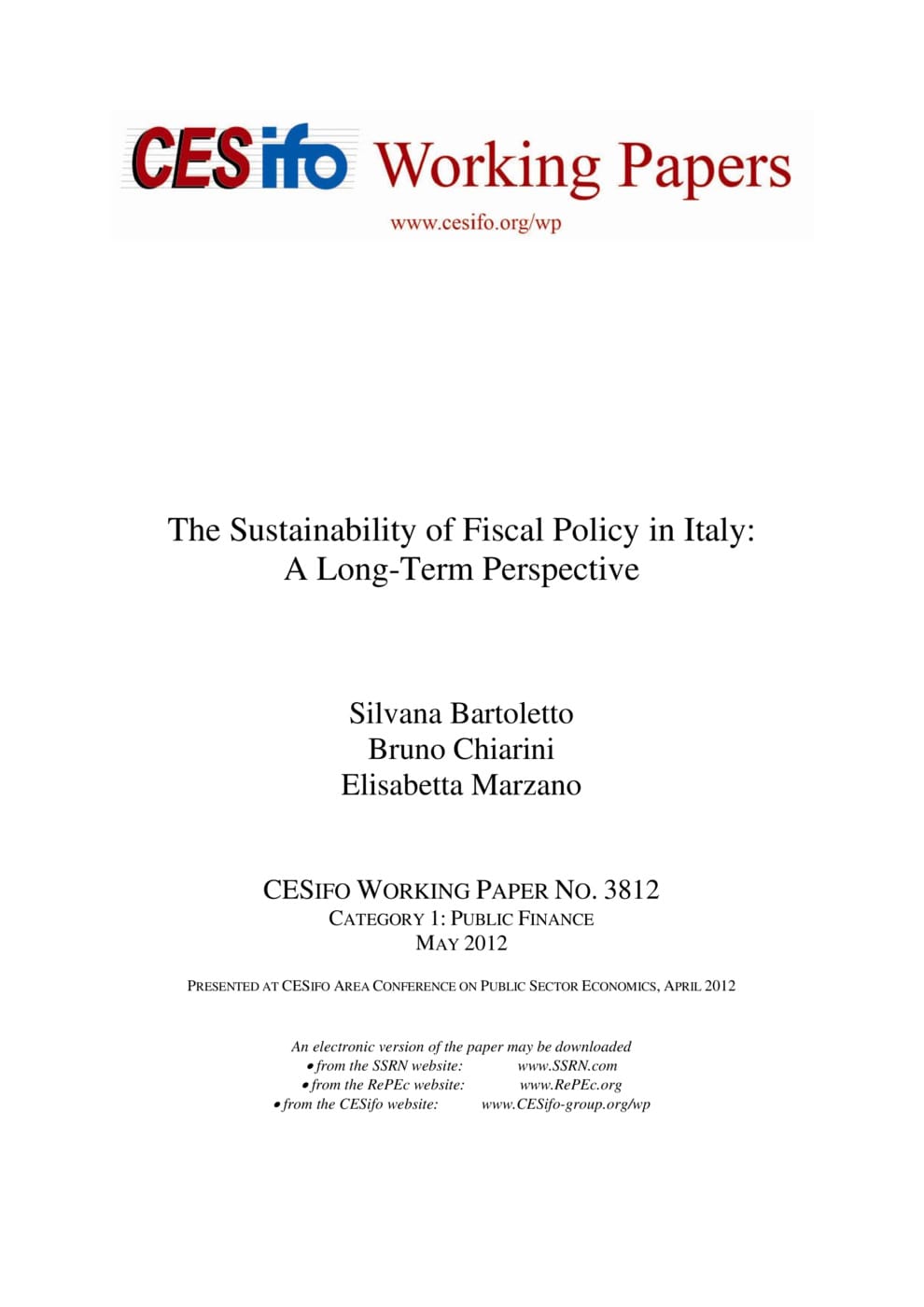The Sustainability of Fiscal Policy in Italy: A Long-Term Perspective
CESifo, Munich, 2012
CESifo Working Paper No. 3812

The recent fears of a sovereign debt crisis have spurred interest in the sustainability of public debt. There are two different approaches to the assessment of sustainability: the use of sustainability gap indicators (Blanchard et al., 1990) and the time series approach (Trehan and Walsh, 1988). In this paper we analyze the sustainability of public debt in Italy following the latter approach. We examine almost the entire life of the Italian State, i.e. 1861-2010, by employing a database containing several statistical novelties: new time series estimates of public debt and GDP (respectively Banca d’Italia, 2008 and Baffigi, 2011) and an original reconstruction of the revenues of the State. The long-term analysis of new homogeneous statistical series has led to a different perspective, in particular when compared with the existing Italian literature on the debt-to-GDP ratio. Two main issues are addressed. First, we examine the size and dynamics of public finance aggregates. In particular, we carry out a detailed historical analysis, aiming to identify, in a narrative approach, the determinants of public debt and its ratio to GDP. Second, exploiting unit root analysis and cointegration, we test for the sustainability of public debt in Italy following the approach proposed both by Trehan and Walsh (1988, 1991) and Bohn (1991).
Public Finance
Fiscal Policy, Macroeconomics and Growth